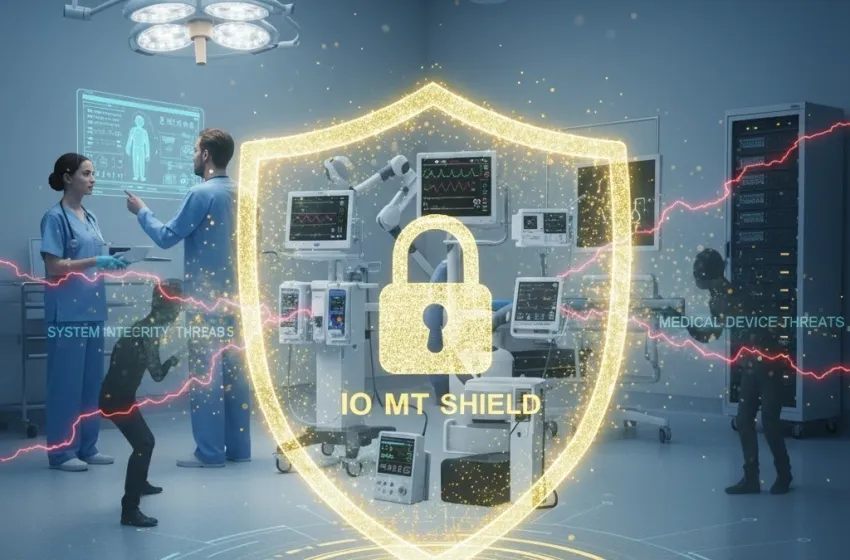Discover strategies to protect medical devices and patient data.
The modern hospital is a complex ecosystem where patient care is increasingly reliant on technology. At the core of this transformation is the Internet of Medical Things (IoMT)—a vast network of interconnected medical devices, sensors, and healthcare IT systems. While this network offers unprecedented benefits in diagnostics and remote patient monitoring, it simultaneously introduces a new frontier of hospital cybersecurity risks. The sheer volume and sensitivity of data flowing through these networked devices make them prime targets, establishing the critical need to secure this infrastructure to prevent devastating consequences like ransomware and data breaches.
The IoMT Landscape: A Target-Rich Environment
The IoMT includes everything from smart infusion pumps and robotic surgery systems to patient-wearable monitors and digital imaging equipment (like MRI and CT scanners).
Device Vulnerabilities and Operational Gaps
Many legacy medical devices were not designed with modern security in mind. They often run on outdated operating systems, have hardcoded default passwords, and lack the processing power to support necessary endpoint security software. This creates significant IoMT security challenges. Unlike standard IT assets, these devices cannot be easily taken offline for patching or updates, as they are often directly involved in critical patient care, creating a conflict between security and clinical availability.
The Lure of Patient Data
A hospital network houses some of the most sensitive and valuable data—Protected Health Information (PHI). This includes names, addresses, insurance details, and highly personal medical records. For cybercriminals, this data is gold, driving the profitability of data breaches. The value of a stolen medical record on the dark web far exceeds that of a credit card number, leading sophisticated threat actors to specifically target healthcare infrastructure.
Major Cybersecurity Threats to IoMT Networks
The threats facing IoMT are diverse and constantly evolving, requiring a multi-layered defense strategy.
Ransomware Protection: The Urgent Imperative
Ransomware is arguably the most immediate and disruptive threat. A successful ransomware attack encrypts critical systems, paralyzing operations. In a hospital, this means locking access to electronic health records (EHRs), lab results, and, most critically, the control systems for medical device threats. The consequence is not just financial; it forces staff to revert to paper-based processes, severely delaying care and directly endangering patient lives. Effective ransomware protection requires network segmentation, rigorous access controls, and a robust backup and recovery plan.
Data Breaches and the Insider Threat
While external attacks dominate the news, data breaches can also originate internally. This may be due to accidental device misconfigurations, poor employee training, or malicious insiders. An exposed unsecure device or server, even momentarily, can be a gateway for exfiltration of massive amounts of sensitive data, leading to regulatory fines and severe reputational damage.
Direct Patient Harm via Device Tampering
The most terrifying scenario involves direct manipulation of networked devices. For example, a compromised infusion pump could have its dosage settings altered, or a remote-controlled surgical robot could be hijacked. While rare, the potential for such medical device threats to cause physical harm makes IoMT security a matter of life and death, elevating the stakes far beyond standard corporate security.
The Road to Robust IoMT Security
Securing the hospital environment is a shared responsibility that requires a holistic approach:
- Asset Inventory and Risk Scoring: Hospitals must maintain an up-to-date, detailed inventory of every connected device, including its operating system, location, and potential vulnerabilities.
- Network Segmentation: Isolating IoMT networks from the main administrative IT network can contain potential breaches. If one device is compromised, the attacker cannot easily pivot to critical systems.
- Zero Trust Model: Assuming no user or device is trustworthy by default, requiring continuous verification for every access request.
- Patching and Update Protocols: While difficult, a process for safely and routinely updating IoMT devices must be established, often in coordination with device manufacturers.
By treating IoMT security as a critical component of patient safety, hospitals can move from reactive defense to a proactive posture, ensuring the continuity of care against the growing tide of cyber threats.



































